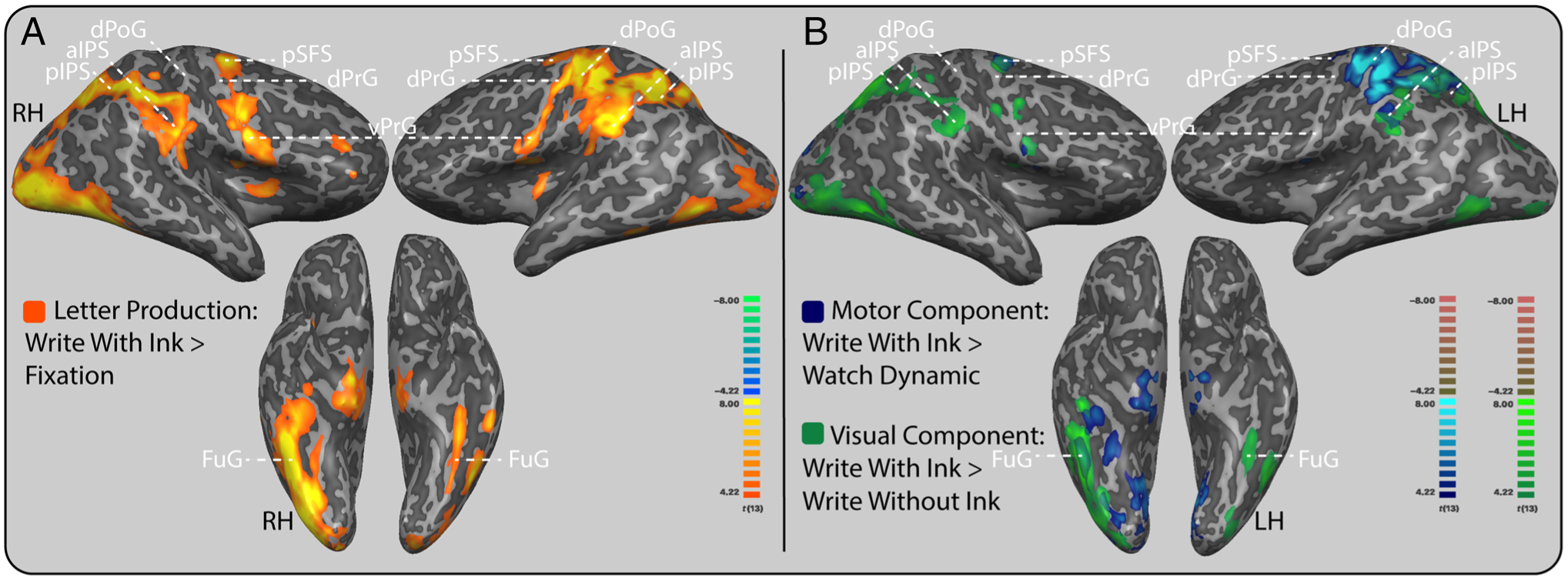Figure 3.

Motor and visual components of letter production from whole-brain contrasts. Letter production recruited a broad frontal motor, parietal, and ventral-temporal response, with frontal motor and anterior parietal cortices being associated with the motor component and posterior parietal and ventral-temporal cortices being associated with the visual component. (A) Letter production system. Areas that are orange were more active during letter production than at rest. (B) Motor and visual neural components of letter production. Areas that are blue were more active during letter production than watching the letter unfold (motor component), and areas that are green are more active during letter production than during letter production without ink (visual component). Group level results are displayed at a standard voxel-wise threshold of pvoxel < .001, and a cluster threshold of 40 contiguous 3-mm isometric voxels overlaid on an inflated anatomical image from a single participant. Anatomical label abbreviations: pSFS = posterior superior frontal sulcus; dPrG = dorsal precentral gyrus; vPrG = ventral precentral gyrus; dPoG = dorsal postcentral gyrus; aIPS = anterior IPS; pIPS = posterior IPS; FuG = fusiform gyrus; LH = left hemisphere; RH = right hemisphere.
